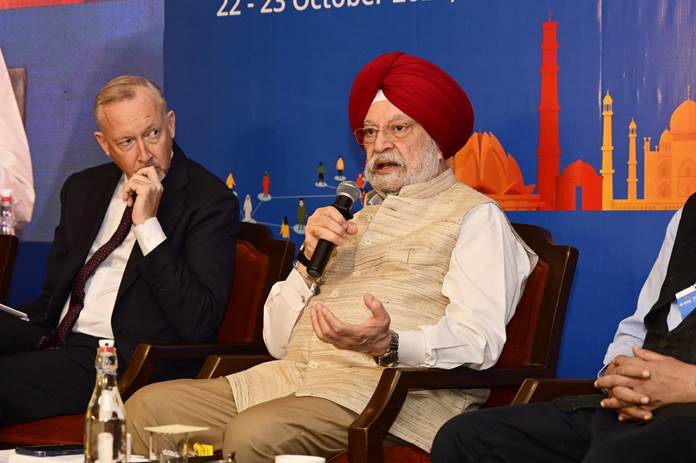India to Develop Roadmap Post-20% Ethanol Blending Target, Says Minister Hardeep Singh Puri at G-STIC Conference
India to Develop Roadmap Post-20% Ethanol Blending Target, Says Minister Hardeep Singh Puri at G-STIC Conference
Addressing the 7th G-STIC Delhi Conference on “Accelerating Technologies Solutions for the SDGs,” Shri Hardeep Singh Puri, Minister of Petroleum and Natural Gas, articulated India’s evolving journey towards sustainable energy solutions. Highlighting the potential for these technological advancements to be replicated across the Global South, Shri Puri provided insights into the complexities of energy transitions within democratic frameworks, emphasizing that there is no clear answer to whether these transitions are inherently easier or more difficult in democracies.

The 7th G-STIC (Global Sustainable Technology and Innovation Community) Conference organized by TERI and VITO along with the support of eight other not-for-profit independent technology research institutes, is being hosted in India for the first time. The Conference will deliberate on challenges under the umbrella theme “Harmonizing Technology, Policy and Business Pathways for Sustainable Future and Coexistence”.
Speaking at the inaugural session of the Conference, Shri Hardeep Singh Puri discussed the critical trilemma that democratically elected governments face globally: balancing affordability, availability, and sustainability in energy policy. He pointed out that as global energy demand rises, India’s own energy consumption is projected to increase significantly—from 5.4 million barrels per day today to an anticipated 7 million barrels per day by 2030. This growing demand positions India as a major contributor to global energy consumption, with projections indicating that 25% of the increase in global energy demand over the next two decades will originate from India alone.
Affordability remains a primary concern in addressing this energy transition. The Minister emphasized the government’s commitment to research and development, citing innovative solutions such as hydrogen fuel cell technology being piloted in public transport. Currently, India is operating 15 hydrogen-powered buses, which are still in the demonstration phase. These initiatives reflect a broader vision for sustainable transport solutions that can contribute to reducing the carbon footprint.
A highlight of the address was the substantial progress made in ethanol blending, which has surged from just 1.53% in 2013-14 to 16% today. This achievement has prompted the government to advance its blending target of 20% from 2030 to 2025, showcasing a proactive approach to energy sustainability. Shri Puri noted that discussions have already begun to establish a roadmap for sustainable energy solutions beyond the 20% blending target, indicating a forward-thinking strategy that anticipates future energy needs.
The Minister stressed the need for addressing the energy requirements of developing nations, particularly in the Global South, where many countries rely heavily on energy imports. He expressed confidence that the success of India’s ethanol initiatives could serve as a model for these regions, although he acknowledged that unlike Brazil, India lacks the luxury of abundant arable land for biofuel production. Nevertheless, he emphasized the potential for innovative biofuel strategies to alleviate import dependency while addressing local energy needs.
The Minister also highlighted the transformative impact of the Ujjwala scheme, launched in 2016, which has significantly expanded access to cooking gas. The number of cylinder connections has increased from 140 million to 330 million, providing clean cooking fuels to economically weaker sections of society. This initiative, along with other social schemes of Government, has played a crucial role in lifting approximately 250 million people out of multidimensional poverty under Prime Minister Narendra Modi’s leadership.
In his concluding remarks, Shri Hardeep Singh Puri focused on the potential of green hydrogen as a game-changer for India’s energy landscape. He outlined the importance of local demand, production, and consumption in making green hydrogen a viable energy source. The key challenge remains in reducing the cost of production, and he called for ongoing innovation and scaling of technology in this sector.